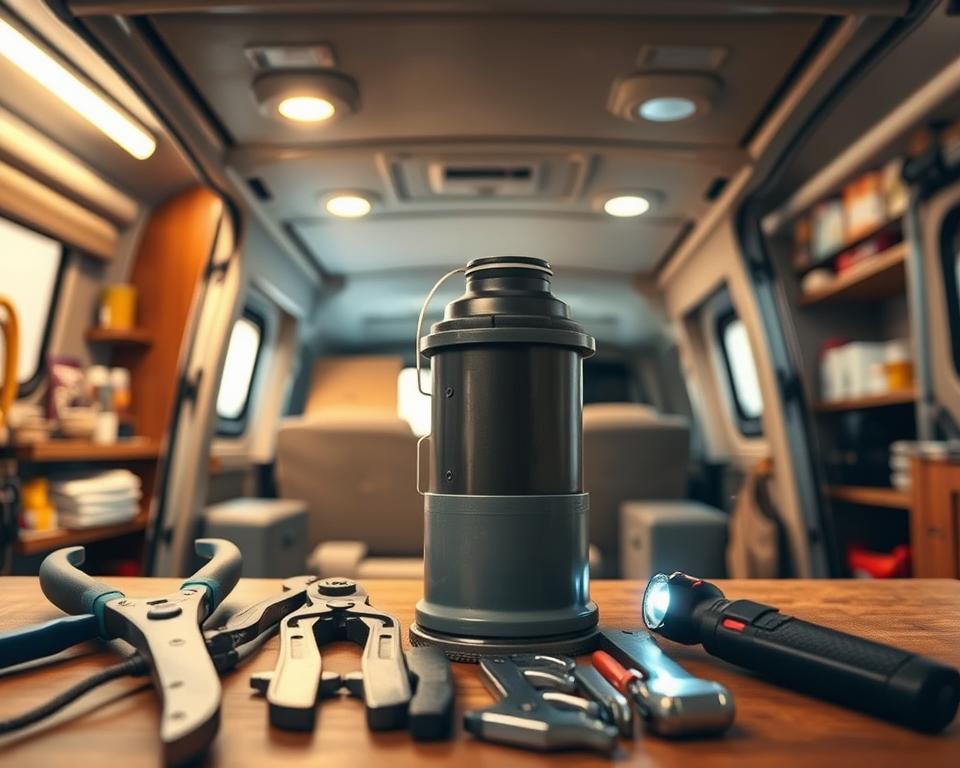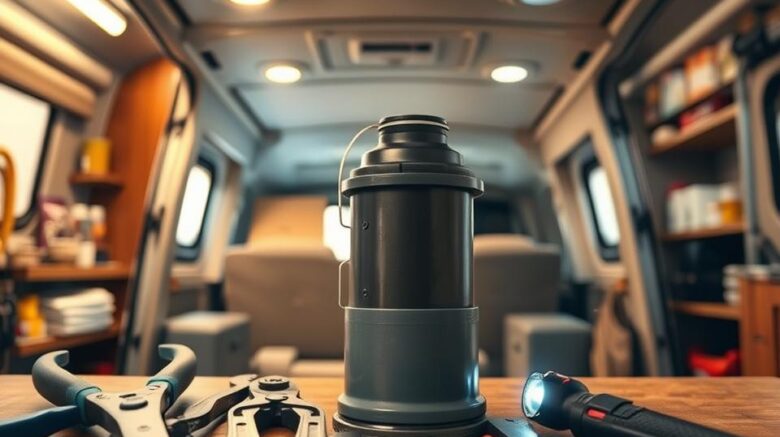RV Sewage Tank Pumping: Key Upkeep Guidelines
Consider the consequences of neglecting your RV’s septic system. Many RV owners find the idea of septic tank pumping daunting. However, understanding these upkeep steps is essential. Such measures keep your trips worry-free and prevent costly fixes. Learning proper waste disposal is key to your septic health. Here are key pointers on RV septic service with upkeep advice to ensure your system operates flawlessly.
Getting to Know Your RV’s Waste Setup
Your RV includes tanks designed for different wastes. It consists of a black tank for toilet use, a gray tank for sinks/showers, plus a freshwater reservoir. Grasping how each part works is key to proper black tank servicing and overall system care.
Drains and vents manage liquid and air movement throughout the system. A good grasp prevents clogs and nasty odors. It’s the foundation of a smooth camping experience.
Maintaining clear, working tanks requires routine effort. Frequently checking tank levels and emptying on time preserves comfort. Proper upkeep extends tank life and enhances every journey.
The Value of Consistent Septic Maintenance
Routine sewage draining preserves functionality and hygiene. Waste buildup triggers odors and backups that ruin outings. A full tank can produce embarrassing backups. Such mishaps kill the fun on the road.
Skipping pump-outs leads to pricey repairs. System failures cause leaks and wear out parts prematurely. Timely emptying keeps your plumbing running smoothly. You’ll avoid nasty surprises and costly breakdowns.
Staying on top of maintenance wards off backups. Investing in pump-outs shows you care about your RV. It greatly improves your travel experience. By sticking to a dump schedule, you’ll relish the outdoors worry-free.
Recommended Pump-Out Intervals
Determining dump intervals needs careful thought. Common guidance suggests a 3–5-day window. Still, it varies with tank size and occupancy. Pinpointing the correct dump time is key for effective wastewater management.
Dump the black tank at about two-thirds capacity. This prevents solids from clogging and keeps flow steady. Ignoring it can cause backups and unpleasant odors.
Various factors influence dump frequency, such as
- Number of people on board
- Length of stay
- Type of waste generated
- Tank capacity
Scheduling prevents on-the-road crises. Sync with any public dump station hours. Tracking your usage helps forecast dump needs.
| Usage Scenario | Pumping Frequency |
|---|---|
| Weekend Getaway (2 people) | Every 3–4 days |
| Long Stay, Four to Six Occupants | Every 2–3 days |
| Seasonal Use, Two to Four Campers | Weekly or Bi-Weekly |
Keep a close eye on tank levels and your habits. Staying attentive guarantees a pleasant trip.

Top Methods for Emptying Your Tanks
Proper methods stop odors, clogs, and expensive repairs. Always empty the black tank first to protect the gray tank. It keeps gray water from mixing with solids.
Using a high-quality hose minimizes leaks and ensures smooth dumping. Secure all fittings firmly to avoid leaks. After emptying, flush the black tank with plenty of water. This removes residue and preps the tank for next time.
Know where dump stations are located. Being prepared saves time on the road.
In short, follow these key steps for efficient dumping:
- Empty the black water tank first.
- Use a top-quality sewer hose.
- Flush the black tank thoroughly after emptying.
- Plan your dump station locations.
These tips refine your waste disposal process.
How to Care for Your Black and Gray Tanks
Grasping correct handling of black and gray tanks ensures system health. Maintain a bit of water in the black tank to aid waste decomposition.
Refrain from disposing non-biodegradable items. Always use RV-safe toilet paper to prevent clogs. Regular checks spot leaks or cracks before they worsen.
Occasional treatments boost system performance. These products balance enzymes and bacteria for efficient decomposition. Such measures keep your tanks operating at their best.
- Check for leaks and damage often.
- Apply RV-specific chemical treatments.
- Keep vents clear to avoid odors.
Adhering to these practices safeguards your system. You’ll enjoy more worry-free trips.
Essential Pumping Tips
Successful pumping requires precision and a clear procedure. It’s essential to use designated dump stations. Know your tank’s capacity to avoid overflows.
Check tank indicators regularly to time pump-outs. This extends tank life and enhances trip comfort. A planned maintenance routine keeps everything running smoothly.
Flush well after every emptying. It ensures each dump is cleaner than the last. Such tactics keep your rig in top shape and improve your travel experiences.
Avoid These Septic System Errors
Maintaining your system is vital for uninterrupted camping. Not using enough water in the black tank leads to buildup. Adequate water use breaks down solids efficiently.
Flushing inappropriate items blocks pipes. Only biodegradable RV-safe items belong in the black tank. They cause backups and costly service calls.
Keep the black tank valve closed until ready to dump. Premature opening prevents a full flush. Only open when ready to empty for a complete clean.
Awareness of these errors boosts system longevity. Steering clear of these mistakes ensures durable performance.
When to Seek Professional Septic Services
Knowing when to hire pros preserves system health. Persistent odors often indicate complex issues. Tanks that empty sluggishly hint at internal blockages.
Visible residue at dump points requires attention. Such situations usually need high-pressure cleaning. Experts use specialized tools to clear stubborn clogs.
Regular expert check-ups safeguard tank health. Early intervention avoids expensive failures. Hiring qualified technicians saves time and money long term.
Ongoing Septic Care Tips
Long-term strategies sustain wastewater efficiency. Scheduled dumps preserve longevity and operation. Flushing often prevents buildup and costly repairs.
Implementing clean cycles safeguards tank health. Inspecting connections stops leaks before they spread. Opting for biodegradable products protects plumbing.
Consider these long-term practices:
- Stick to a pump-out timetable.
- Rinse often to remove solids.
- Sanitize twice a year.
- Inspect parts frequently for wear and tear.
Investing in prevention brings peace of mind. Routine service lets you focus on the scenery, not your sewer.
Final Thoughts
Good septic care ensures enjoyable trips. Knowing system function and cleaning steps stops issues. Routine black tank dumping boosts performance. It enhances every mile.
Consistent inspections and care deliver trouble-free trips. This reliability supports every outing. Adopting these habits keeps your RV ready to roll. So you can focus on making memories, not dealing with tanks.
